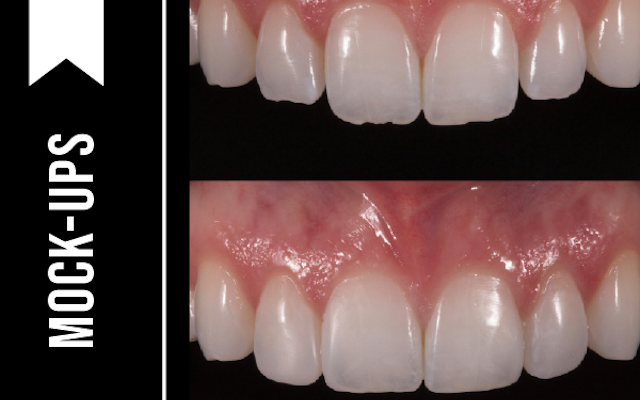Planning a mouth full of dentistry without first designing the ideal smile is like trying to build a house with no architectural plans. This is why many patients end up with teeth of different sizes and colors, where compromises have been made to “conform” to the existing condition.
The premise of facially driven smile design is that the smile should be in harmony with the landmarks of the face. A very asymmetric face does not necessarily look in harmony with a perfectly symmetrical smile. So, mathematical rules for design need to be placed in the context of the face.
Systematic Smile Design
As such, the traditional rules of smile design need to be considered more as guidelines to help us understand why a smile does not appear to be in harmony. We can design the ideal smile according to the face and then compare it with the existing starting point, taking into consideration the underlying skeletal structure, the lip position and dynamics, and the position and health of the current dentition.
We may decide to deviate from what’s considered the ideal smile, but this can be identified at an early stage and discussed with patients to set realistic expectations before they decide on treatment.
With this approach, the risks and benefits of treatment can be viewed in the context of the desired and achievable end result to ensure valid consent is obtained. If the smile is designed before treatment, this also serves as quality control for all stages of treatment. For example, procedures such as crown lengthening and orthodontics can be calibrated according to the planned end result.
It also helps to take a step back and look at the entire face as if it were an artistic composition. There will be areas of harmony that are pleasing to the eye, and areas of visual tension that are not pleasing. We can then narrow our focus to the smile and any areas of tension to determine what we should change to improve the balance and harmony.
Light Reflection
One of the factors we can change is the light reflective surface of a tooth or teeth. In smile design, we learn about the importance of dominant centrals:
“Dominance is directly related to the ability of the teeth to reflect light, which is dependent upon their proportions, line angles, relative size and position in relation to the other teeth in the dental composition.”
Sometimes, I have patients who are maxillary deficient and want their teeth to look more obvious in their smile. Through a process of systematic analysis, I recognize this and can explain their orthognathic options. I can then discuss, given the limitations of the small maxilla, what can be done dentally to compensate for this compromised starting point.
This understanding of visual dominance helps me consider the light reflective properties of the teeth and how I might influence them so the teeth appear more dominant in the smile. If the teeth are retroclined, for example, there is less reflective surface available, and so a patient may whiten his or her teeth in an attempt to make them brighter but still feel they are dull. This is because of the position of the teeth and not the actual color. Completing orthodontics to upright the facial surface will allow for better light reflection.
Similarly, if the anterior teeth have worn down, they will have less reflective surface available. It may not be possible functionally to add much length to the teeth, but if they are restored with stronger reflective surfaces, they can appear more dominant in the face.
A Successful Case
This patient came to see me because he felt his teeth did not show in his smile.
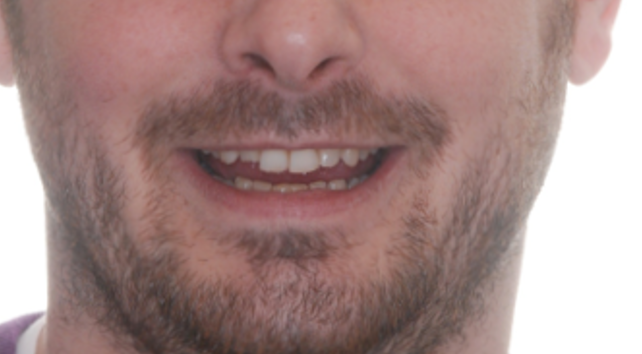
He had a low lip line, some dentoalveolar extrusion of the lower anteriors and a deep bite. His maxilla was retrognathic and he could have had orthognathic surgery to improve the position of his maxilla, but he declined. Instead, we restored his upper 10 teeth with IPS e.max restorations, equilibrated to function. We could not add much length, but we did improve the dominance of his centrals with more space between the line angles creating more reflective surface.
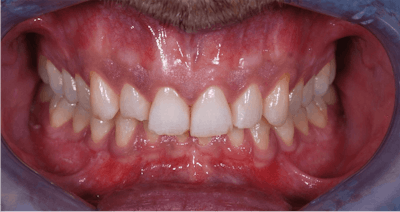
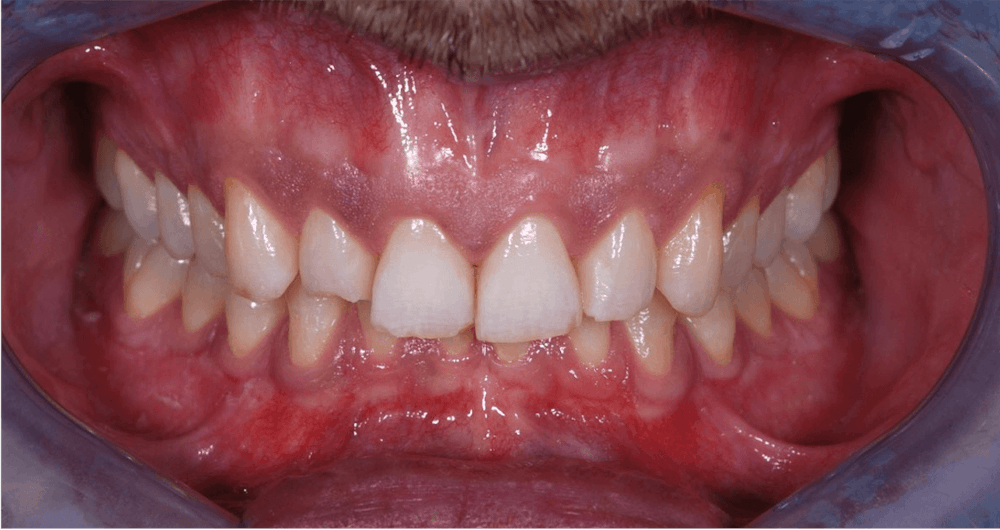
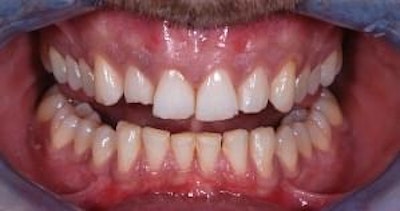
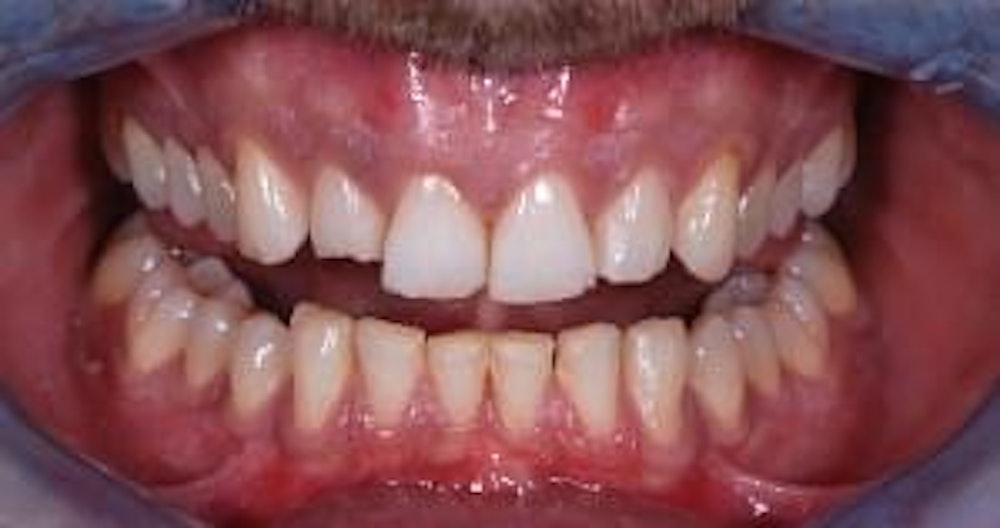
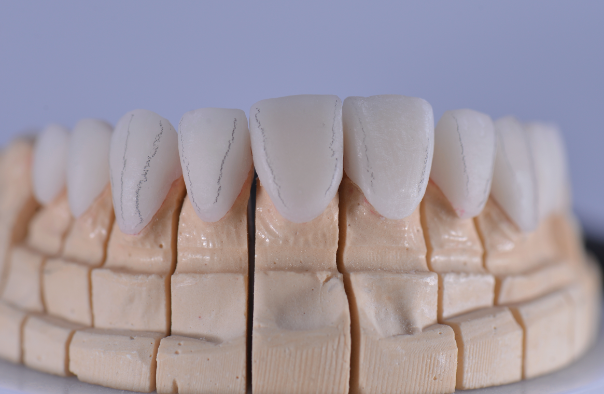
Line angles marked in pencil on porcelain.

Final restorations with improved dominance created by a higher value and increased light reflective surface.
IPS e.max ceramics : Art Dental, Sheffield, England.
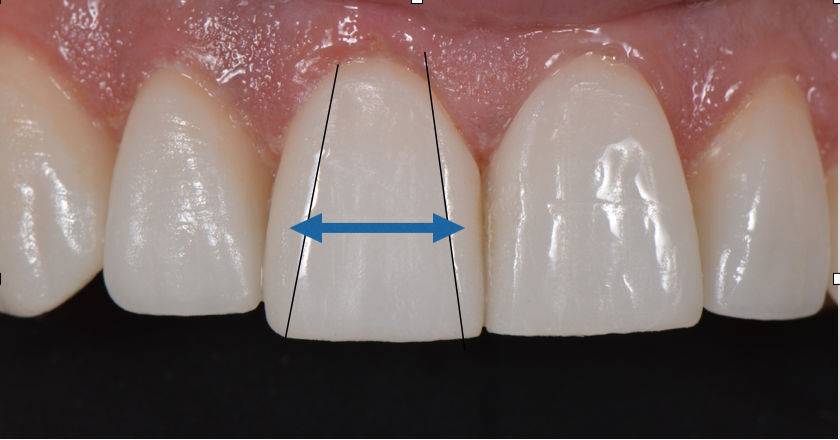
Increased light reflective surface aided by the line angles or the heights of contour of the central incisors being further apart.
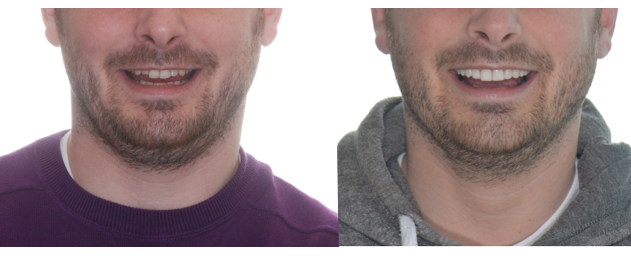
Final result is a more dominant smile for the patient.
 By:
By: 



